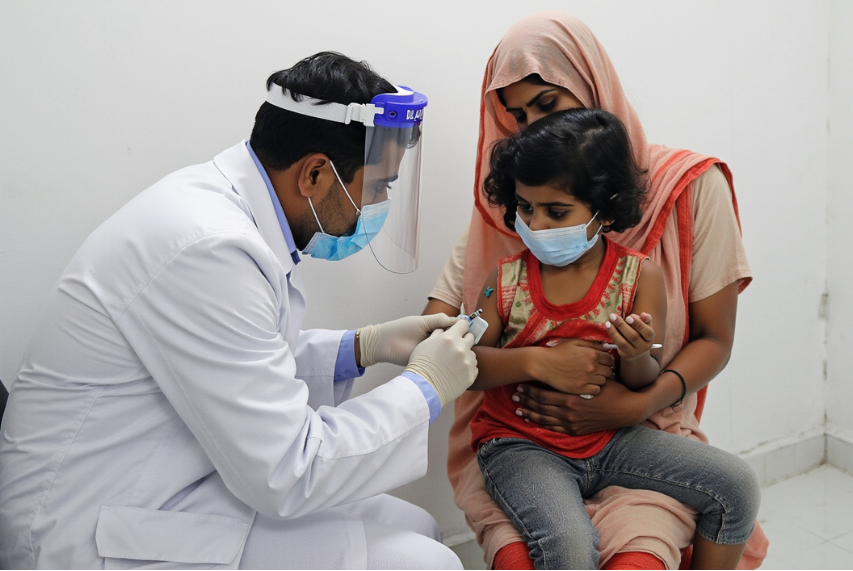Understanding Pediatric Blood Disorders: 8 Key Facts for Parents
Have you ever wondered what happens if your child’s blood isn’t working properly?
Blood disorders in children can be confusing and scary. Many parents don’t know much about these conditions until their child is diagnosed. But learning about them can help you take the right steps to keep your child healthy.
Pediatric blood disorders include many conditions, from mild to severe. This article explains eight important facts about these disorders.
Pediatric Blood Disorders Are Diverse
Pediatric blood disorders come in many forms. Some affect red blood cells, which carry oxygen. Others involve white blood cells, platelets, or the clotting system. For example, anemia happens when there are not enough red blood cells.
Sickle cell disease changes the shape of these cells, making it hard for them to move through blood vessels. Disorders like hemophilia or von Willebrand disease stop blood from clotting properly, causing excessive bleeding.
Each disorder is unique. Some are mild, while others are life-threatening. Knowing the type of disorder helps parents understand the specific needs of their child.
2. Early Diagnosis Can Change Lives
Did you know many blood disorders are diagnosed early? Newborn screening tests can catch conditions like sickle cell disease and thalassemia. These tests are quick and safe. Early diagnosis is important because it allows doctors to start treatment before complications occur.
For example, children with sickle cell disease benefit from early medications that prevent pain and infection. Without early care, these children face more serious health problems. So, if you suspect a problem, talk to your child’s doctor right away.
3. Family History Plays a Big Role
Blood disorders often run in families. If a parent or grandparent has a condition like hemophilia or sickle cell disease, there’s a chance the child might inherit it. Genetic testing can help identify risks before symptoms appear.
For example, hemophilia is passed down through the mother’s genes. Boys are more likely to have it, while girls may be carriers. Understanding family history allows parents to prepare and seek medical advice early.
4. Sickle Cell Disease is Common and Complex
Sickle cell disease is one of the most common inherited blood disorders. In this condition, red blood cells become stiff and shaped like a crescent moon. These cells can block blood flow, causing severe pain and organ damage. They also break apart easily, leading to anemia.
Children with sickle cell disease need special care. Regular doctor visits, medications, and a healthy lifestyle can prevent many complications. Parents should watch for warning signs like fatigue, swelling, or frequent infections.
5. Hemophilia Makes Blood Clotting Difficult
Hemophilia is another inherited disorder. It affects the body’s ability to stop bleeding. This happens because certain clotting factors are missing from the blood. A simple cut or bruise can become dangerous without treatment.
Hemophilia comes in different types, such as type A and type B. Treatment involves replacing the missing clotting factors through injections. With proper care, children with hemophilia can live active, healthy lives. Parents should teach their child to avoid injuries and seek help quickly if bleeding occurs.
6. Specialized Care is Essential
Children with blood disorders need care from specialists. Pediatric hematologists are doctors who focus on blood problems. These specialists understand how blood disorders affect children differently than adults..
Specialized care often includes regular check-ups, lab tests, and advanced treatments. Some children may need blood transfusions or bone marrow transplants. Treatment centers also provide emotional and social support, helping families manage the challenges of long-term care.
7. Research Brings Hope
Ongoing research is improving treatments for blood disorders. Clinical trials test new medicines and therapies to make life easier for children with these conditions. For example, gene therapy shows promise in treating sickle cell disease and hemophilia.
Parents can ask their child’s doctor about research opportunities. Joining a clinical trial may give access to cutting-edge treatments. Research also helps scientists understand these disorders better, paving the way for future cures.
8. Support Systems Help Families Cope
Living with a blood disorder can be overwhelming. But families don’t have to face it alone. Hospitals and community organizations offer resources and support groups. These groups connect parents with others who share similar experiences.
Support services can help with medical bills, transportation to appointments, and emotional well-being. They also provide education about the disorder, empowering parents to care for their child. Asking for help is a sign of strength, not weakness.
Final Thoughts
Pediatric blood disorders can feel scary at first. But with the right knowledge and support, parents can manage these conditions and give their child a happy, healthy life. Start by learning about your child’s specific disorder and talking to specialists.
Ask questions and stay informed about new treatments. Finally, lean on support networks to guide you through this journey. Remember, you’re not alone. Together with your care team, you can face any challenge and ensure the best outcomes for your child.







Comments